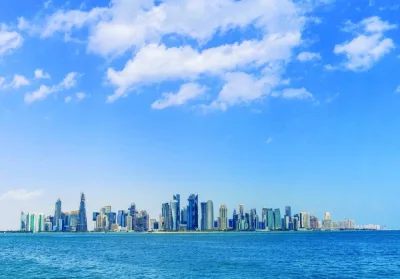There are, for sure, “green shoots’’ of hope that Europe’s slowdown is slowly drawing to a close. But the region has still a long way to go if it’s to deliver on the hope sparked by recent upbeat economic numbers.
Eurozone gross domestic product growth topped expectations at 0.4% in the first quarter, and a similar number is predicted today from Germany, the region’s biggest economy as well as its growth engine.
The outlook isn’t as bad as feared, but sustaining the upturn requires a clear improvement in confidence to boost investment and demand.
Fresh doubts over global trade, ongoing weakness in German manufacturing, uncertainty over China’s growth, and the continuing Brexit imbroglio; no wonder, some of Europe’s big corporate names continue to warn of a “volatile” backdrop.
A European Commission sentiment measure has been falling almost non-stop and is down 9% since the start of 2018.
Worse, Europe’s hope for a swift reversal of unfavourable economic conditions looks less likely. The US unleashed new trade tariffs on China last Friday, and China retaliated on Monday in a tit-for-tat move. Add simmering tensions in the Middle East and soaring oil prices, up 30% this year.
Of particular concern is Germany. Its economy stagnated at the end of 2018, trailing most of its peers in the euro area, and continued trade tensions mean any pickup in Europe’s powerhouse economy could be muted.
“Germany’s economy should show evidence of a rebound in the first quarter, providing the ECB (European Central Bank) with much needed reassurance that a downturn in the second half of 2018 was temporary. Still, manufacturing weakness is likely to weigh on its performance in the first half,” according to an assessment by Bloomberg economists.
The car industry is under particular pressure. It was already facing issues including weaker Chinese demand, disruption from new emissions tests, and the transition to electric vehicles. US tariffs – President Donald Trump is due to decide by May 18 whether to slap levies on car imports, though the date could be extended – would be a damaging blow.
Along with weaker demand, companies are being pounded by higher raw material costs, notably energy. Consumer goods maker Henkel described an “increasingly challenging’’ environment as it reported earnings that fell short of expectations.
Economists currently foresee euro-area growth in 2019 of 1.1%, less than half the pace projected for the US. The bloc’s better first quarter means that could be revised up, but the damage so far has already pushed the ECB to delay interest-rate hikes, and German 10-year bond yields have tumbled below zero.
Confidence has also been weakened by political tensions. Elections for the European Parliament are expected to produce gains for anti-establishment parties, increasing uncertainty about future economic policy.
There are “green shoots’’ signalling Europe’s slowdown might finally be passing, and it’s worth waiting a while to judge if the economy needs more stimulus, according to ECB Governing Council member Ardo Hansson.
Make no mistake, it’s still a lot for ECB officials to digest as the mid-year point approaches. They do have “miles to go” before they can sleep tight.



